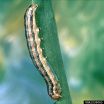(Press-News.org) Leading coral reef scientists in Australia and the USA say there needs to be a new approach to protecting the future of marine ecosystems, with a shift away from the current focus on extinction threat.
"Extinction is the final endpoint, but coral reefs are in deep trouble long before we get to that point. We need to take action much earlier," says Professor David Bellwood from the ARC Centre of Excellence for Coral Reef Studies (Coral CoE) at James Cook University.
"The goal should be to maintain reefs that can support corals, fish and humans" Professor Bellwood says.
In a world first study published in the journal, Current Biology, researchers tested the concept of 'double jeopardy', which is widely used to assess extinction risk. It is based on the assumption that the risk of extinction is greater if a species has both a small geographic range and low numbers.
The researchers counted the numbers of individuals of more than 400 species of fishes and corals across a 10,000km swath of the Pacific Ocean, from Indonesia to French Polynesia.
Professor Terry Hughes from the Coral CoE says they found no relationship between each species abundance' and its geographic range. To the contrary, the researchers found that some species with a small range had large numbers while some with a vast range spanning the Indo-Pacific Ocean were quite rare. The widely held assumption of double jeopardy is false.
"Our findings call into question the growing practice of assessing extinction risk of coral reef species without knowing how many of them are out there," says Professor Hughes. This is the first study to systematically count corals and reef fishes at a geographic scale".
The researchers argue that coral reef systems are threatened long before individual species are in danger of extinction. They say extinction threat is a poor approach to take to ensure the future of coral reefs.
"Many species on coral reefs are critically important for maintaining ecosystem health. Many reefs are in serious decline, even if the chances of individual species going extinct are slim."
Professors Bellwood and Hughes argue that the criteria for the IUCN threatened species Red List, used to assess extinction threat, are inappropriate for widespread marine species.
"The vast majority of marine plants and animals are comparatively resistant to global extinction because of their high rates of reproduction, ability to disperse widely, and huge geographic ranges which span up to tens of millions of square kilometres," Professor Hughes says.
"Rather than guessing at which species are threatened, we need a focus on local action to avert or recoup the loss of ecosystem function caused by habitat destruction and severe depletion of key species," Professor Hughes says.
Professor Bellwood says "This paper calls for caution when identifying species at risk of extinction on coral reefs. It highlights the potential weaknesses in current approaches and offers an alternative approach where species are valued for the services they provide for both reefs and humans".
INFORMATION:
Paper
Double Jeopardy and Global Extinction Risk in Corals and Reef Fish by Terry P. Hughes, David R. Bellwood, Sean R. Connolly, Howard V. Cornell and Ronald H. Karlson is published in the journal, Current Biology (2014), http://dx.doi.org/10.1016/j.cub.2014.10.037
Contact
Professor David Bellwood - +61 (0) 407 175 007, david.bellwood@jcu.edu.au
Professor Sean Connolly - +61 (0) 439 945 081, sean.connolly@jcu.edu.au
Professor Terry Hughes - terry.hughes@jcu.edu.au (Professor Hughes is currently travelling and is out of phone contact.)
Eleanor Gregory, Communications Manager - 0428 785 895, eleanor.gregory@jcu.edu.au
VIDEO:
The neurons in this video contain a dye that fluoresces when it encounters calcium ions. When the neuron is excited, calcium floods into the cell and the neuron fluoresces. The...
Click here for more information.
Synapse, the name for the signal-receiving site on a neuron, comes from the Greek word for contact. Neuroscientists used to maintain that neurons form one-to-one relationship to contact one another. Yet more researchers are finding evidence that shows how neurons ...
VIDEO:
The movement of bone marrow B cells was limited in the absence of VCAM-1, as shown in this time-lapse video. B cells (green) were tracked before (left) and after (right)...
Click here for more information.
Newly formed B cells take the easy way out when it comes to exiting the bone marrow, according to a study published in The Journal of Experimental Medicine.
For infection-fighting T and B cells to defend the body, they must first leave their birthplace--the thymus for ...
This news release is available in German.
Infections due to the sexually transmitted bacterium Chlamydia trachomatis often remain unnoticed. The pathogen is not only a common cause of female infertility; it is also suspected of increasing the risk of abdominal cancer. A research team at the Max Planck Institute for Infection Biology in Berlin has now observed the breakdown of an important endogenous protective factor in the course of chlamydial infection. By activating the destruction of p53 protein, the bacterium blocks a key protective mechanism of infected cells, ...
Doctors tell us that the frenzied pace of the modern 24-hour lifestyle -- in which we struggle to juggle work commitments with the demands of family and daily life -- is damaging to our health. But while life in the slow lane may be better, will it be any longer? It will if you're a reptile.
A new study by Tel Aviv University researchers finds that reduced reproductive rates and a plant-rich diet increases the lifespan of reptiles. The research, published in the journal Global Ecology and Biogeography, was led by Prof. Shai Meiri, Dr. Inon Scharf, and doctoral student ...
If you want to see into the future, you have to understand the past. An international consortium of researchers under the auspices of the University of Bonn has drilled deposits on the bed of Lake Van (Eastern Turkey) which provide unique insights into the last 600,000 years. The samples reveal that the climate has done its fair share of mischief-making in the past. Furthermore, there have been numerous earthquakes and volcanic eruptions. The results of the drilling project also provide a basis for assessing the risk of how dangerous natural hazards are for today's population. ...
WASHINGTON, D.C. - Two or more serious hits to the head within days of each other can interfere with the brain's ability to use sugar - its primary energy source - to repair cells damaged by the injuries, new research suggests.
The brain's ability to use energy is critical after an injury. In animal studies, Ohio State University scientists have shown that brain cells ramp up their energy use six days after a concussion to recover from the damage. If a second injury occurs before that surge of energy use starts, the brain loses its best chance to recover.
In mice, ...
Mikhail Kosiborod, M.D., of Saint Luke's Mid America Heart Institute, Kansas City, and colleagues evaluated the efficacy and safety of the drug zirconium cyclosilicate in patients with hyperkalemia (higher than normal potassium levels). The study appears in JAMA and is being released to coincide with its presentation at the American Heart Association's Scientific Sessions 2014.
Hyperkalemia is a common electrolyte disorder which can cause potentially life-threatening cardiac arrhythmias and is associated with chronic kidney disease, heart failure, and diabetes mellitus. ...
BLOOMINGTON, Ind. -- An Indiana University-Dartmouth College team has identified genes and regulatory patterns that allow some organisms to alter their body form in response to environmental change.
Understanding how an organism adopts a new function to thrive in a changing environment has implications for molecular evolution and many areas of science including climate change and medicine, especially in regeneration and wound healing.
The study, which appears in the journal Molecular Biology and Evolution, provides insight into phenotypic plasticity, a phenomenon that ...
November 17, 2014, PORTLAND, Ore. -- People who received automated reminders were more likely to refill their blood pressure and cholesterol medications, according to a study published today in a special issue of the American Journal of Managed Care.
The study, which included more than 21,000 Kaiser Permanente members, found that the average improvement in medication adherence was only about 2 percentage points, but the authors say that in a large population, even small changes can make a big difference.
"This small jump might not mean a lot to an individual patient, ...
This news release is available in Spanish.
Although maize was originally domesticated in Mexico, the country's average yield per hectare is 38% below the world's average. In fact, Mexico imports 30% of its maize from foreign sources to keep up with internal demand.
To combat insect pests, Mexican farmers rely primarily on chemical insecticides. Approximately 3,000 tons of active ingredient are used each year just to manage the fall armyworm (Spodoptera frugiperda), in addition to even more chemicals used to control other pests such as the corn earworm (Helicoverpa ...






